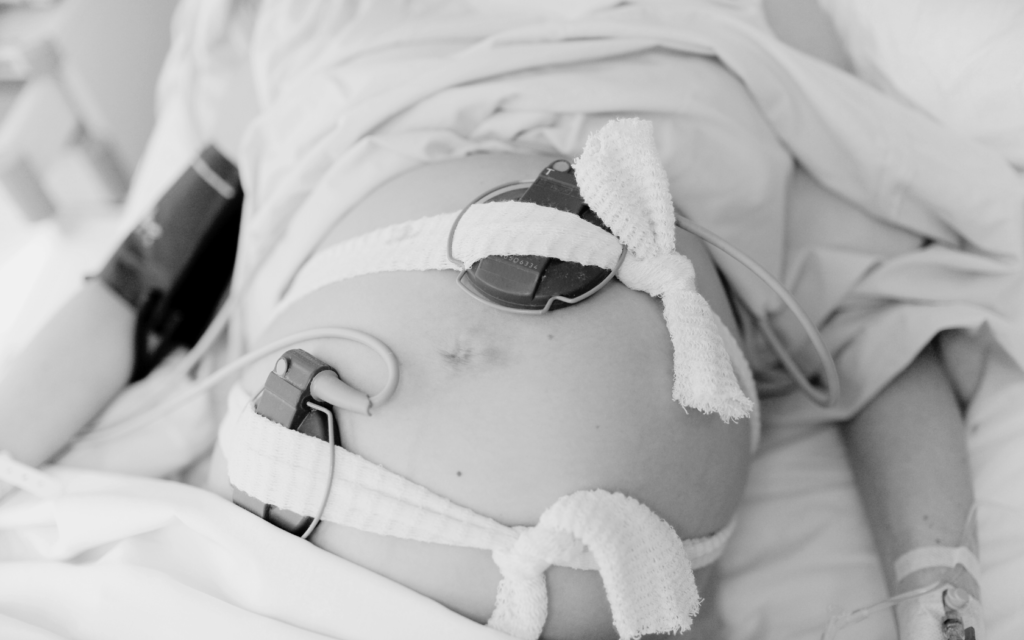In this article, we’ll discuss “common” labor and delivery complications. But don’t let the word “common” scare you—birth complications aren’t the norm. Most births are successful and uncomplicated. But when there is a wrinkle, it’s most often one of the issues mentioned below.

What Are the Most Common Complications During Birth?
According to the National Institute of Health, some of the most common labor and delivery complications are:
- Failure to progress. Prolonged or stalled labor can put the mother and baby at risk. It can happen for various reasons, like contractions that grow weaker, or the cervix failing to dilate. The solution usually involves either medication to speed up contractions, or C-section delivery.
- Shoulder dystocia. The baby’s head is delivered, but the shoulder gets stuck. When doctors try to maneuver the shoulders out, nerves in the baby’s neck can get injured. The risk of harm is greater when they use forceps or vacuum extraction to pull the baby out.
- Fetal distress. This occurs when the baby isn’t getting enough oxygen. Doctors detect fetal distress from changes in the baby’s heart rate. But an abnormal heart rate doesn’t always mean there’s a problem.
- Water breaks too soon. In the movies, when a woman’s water breaks, she goes into labor right away. In reality, labor can start anytime within 24 hours of water breaking. Water breaking without labor beginning is one of the most common labor and delivery complications. Also, if water breaks before 34 weeks, that’s too early. It warrants a hospital stay and close monitoring.
- Postpartum hemorrhage. Another name for this is excessive bleeding after delivery. It can happen due to various factors. For example, the uterus could tear, or fail to contract to deliver the placenta. Sadly, hemorrhage is a top cause of maternal death worldwide.
- Perinatal tears. Many women have small vaginal tears after delivery. Most aren’t serious and heal on their own. But some tears require stitches.
- Umbilical cord issues. Problems such as a nuchal cord (cord around the baby’s neck) or cord prolapse can impact delivery.

Other Birth Complications and Problems
We wish there were no more labor and delivery complications to mention. But given the fact that birth is such a complex process, there are more. But some of these are less common or even rare:
- Infections: Infections during labor or delivery can pose risks to both the mother and the baby.
- Cephalopelvic disproportion (CPD): The baby’s head is too large or the mother’s pelvis is too small. This makes it difficult for the baby to pass through the birth canal.
- Placenta previa: The placenta covers the cervix, leading to potential bleeding and complications during delivery.
- Placental abruption: The separation of the placenta from the uterine wall before delivery. This can lead to bleeding and fetal distress.
- Preeclampsia: With this condition, the woman’s high blood pressure soars. Doctors have to act fast to prevent permanent damage to organs. It usually happens after 20 weeks of pregnancy. Sometimes a woman doesn’t develop preeclampsia until after delivery.

Complications During Birth: Is Your Doctor At Fault?
It’s hard to point fingers at your doctor when, for example, you suddenly get preeclampsia after delivery. Everything can be going perfectly during labor, but labor and delivery complications can happen last minute and without warning.
But you can blame a doctor who doesn’t handle a birth complication correctly. For example, doctors sometimes neglect to monitor a baby’s heart. They miss signs of fetal distress. The baby doesn’t get enough oxygen and ends up with brain damage, cerebral palsy, or worse.
Likewise, if the birthing team doesn’t identify and address postpartum hemorrhage, it can lead to disaster. About 70,000 women die of severe postpartum blood loss each year. In many cases, it’s because doctors didn’t identify the problem quickly enough to stop it.
If you suspect a healthcare worker mishandled complications during birth, don’t hesitate to call a lawyer. Keep in mind that for your case to be successful, you’ll need:
- Proof that a hospital or doctor was in charge of your care
- Proof that the doctor’s negligent actions caused harm
- Medical records and expert opinions to support your case
- Proof of actual damages (physical, emotional, and financial) you suffered because of the doctor’s negligent actions
- Time. If many years have passed since your injury occurred, you probably can’t file a lawsuit. In most states, the legal “deadline” for malpractice cases is 2-3 years.
If you had labor and delivery complications and your doctor mishandled them, causing you harm, legal help is just a phone call away. Call us to find out if you have a case.




